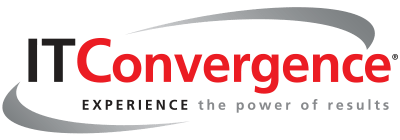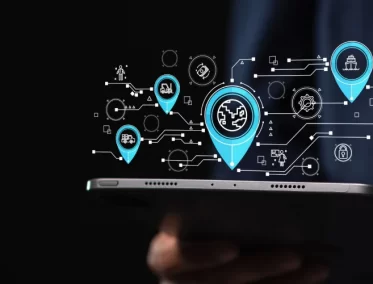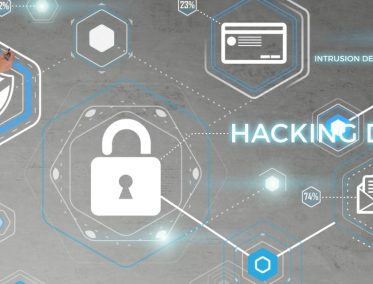Key Takeaways
- Escalating iSeries renewal costs are squeezing IT budgets, driven by IBM’s pricing strategy, hardware aging, and vendor lock-in.
- Aging hardware increases risks around performance, security, and compliance.
- The iSeries skill shortage makes it harder and more expensive to maintain RPG and system administration talent.
- For JDE customers, renewal costs highlight the urgency of modernization, whether through cloud migration, replatforming, or long-term ERP strategy shifts.
- The longer organizations wait, the higher the costs and risks of staying locked into legacy infrastructure.
|
The iSeries has been a trusted platform for decades, providing the foundation for thousands of organizations running critical workloads, including JD Edwards EnterpriseOne. Its reliability, security, and performance made it a natural choice for businesses when ERP modernization wasn’t yet a priority.
But times have changed. Today, companies running JD Edwards (JDE) on IBM’s iSeries/AS400 face mounting challenges: escalating support renewal costs, aging hardware, shrinking pools of skilled talent, and IBM’s contractual pressure to keep customers tied to legacy systems.
As renewal discussions approach, many IT leaders are asking: Does it still make sense to keep JDE running on iSeries, or is it time to modernize?
In this blog, we’ll dive into the implications of iSeries support renewal costs, what they mean for JDE customers today, and how businesses can make smarter decisions about long-term ERP strategy. We’ll also highlight the critical role that iSeries skill shortage plays in this debate.
Why iSeries Support Costs Are Escalating
IBM’s iSeries (now branded as IBM Power Systems running IBM i) has always carried premium support costs. But in recent years, renewal pricing has escalated significantly. Several factors drive these increases:
1. Hardware Lifecycle and End-of-Support Cycles
IBM operates on fixed hardware refresh cycles. As older iSeries machines approach end of life, support costs rise sharply—often doubling or tripling—until organizations either upgrade to new hardware or accept limited extended support contracts.
2. Contractual Leverage
IBM’s licensing and support model is structured to encourage lock-in. As renewal dates approach, customers face mounting pressure to stay within IBM’s ecosystem, or else risk losing critical support. This pressure creates costly renewal terms that may not align with business needs.
3. Inflation and Vendor Pricing Strategy
Like other legacy technology providers, IBM has raised rates to balance shrinking demand. Since fewer organizations are buying new iSeries systems, IBM offsets that decline by increasing support pricing for existing customers.
4. Complex Licensing Structures
Licensing for iSeries is often bundled in a way that includes both hardware and software elements, making it harder to separate what’s essential from what’s overpriced.
For JDE customers, these costs are particularly painful because the ERP system itself already requires significant investment in updates, patches, and integrations. Adding bloated renewal expenses on top of that erodes ROI.
The Aging Hardware Dilemma
Renewal costs are only one side of the story. Hardware aging is another. Many organizations are still running iSeries hardware that is more than a decade old. While these systems may continue functioning, they carry substantial risks:
- Performance Bottlenecks: Modern ERP workloads, including advanced analytics and integrations, push older iSeries machines to their limits. Slow batch processing, reporting delays, and limited scalability hinder business agility.
- Security Vulnerabilities: Legacy hardware may not support the latest security patches or compliance requirements, putting businesses at risk of breaches and audit failures.
- Rising Maintenance Expenses: Finding spare parts and certified service providers for older systems is increasingly difficult and costly.
- Limited Vendor Support: As IBM retires certain hardware versions, customers are pushed toward newer platforms—at premium upgrade and renewal pricing.
For JDE leaders, the question becomes: Is it worth investing in maintaining aging infrastructure when modern cloud alternatives exist?
The iSeries Skill Shortage: A Growing Threat
Beyond costs and hardware, there’s another pressing concern: the iSeries skill shortage.
The talent pool for RPG programmers, COBOL developers, and iSeries administrators is shrinking rapidly. Many of the professionals who built careers on this platform are now retiring, and very few new developers are learning these technologies.
This shortage creates multiple risks for JD Edwards customers:
- Operational Dependency on a Few Experts: If your organization has only one or two RPG developers or system administrators left, you’re highly vulnerable to knowledge loss if they leave.
- Higher Salary Demands: The scarcity of iSeries talent has driven up costs, with skilled professionals demanding premium compensation.
- Slow Response to Issues: Even if you retain in-house talent, troubleshooting complex problems can take longer without access to a broader support community.
- Barriers to Innovation: Maintaining legacy RPG code makes it harder to integrate JDE with modern technologies such as AI-driven analytics, cloud-native applications, or advanced reporting tools.
For CIOs and IT Directors, this shortage isn’t just a staffing challenge—it’s a strategic barrier that limits ERP modernization.
IBM’s Contract Pressure and Vendor Lock-In
Many organizations feel trapped by IBM’s contractual structure. Renewals often come with strings attached:
- Extended support terms that force higher costs.
- Limited flexibility in hardware upgrades.
- Aggressive sales pressure to adopt IBM’s newer Power Systems, even if that doesn’t align with business priorities.
This vendor lock-in dynamic makes companies feel they have no choice but to stay with iSeries. But in reality, alternatives exist—and they may deliver more value at lower cost.
What Renewal Costs Mean for JD Edwards Customers
So, what does all of this add up to for JDE today?
- Shrinking ROI on Legacy Systems
With renewal and maintenance costs climbing, the total cost of ownership (TCO) of running JDE on iSeries grows each year, without corresponding improvements in flexibility or performance.
- Increased Risk of Downtime
Aging hardware and scarce support talent raise the likelihood of system outages. For ERP environments, even small disruptions can have cascading effects across finance, supply chain, and operations.
- Slower Business Transformation
JDE users running on iSeries are at a disadvantage compared to those leveraging cloud-based infrastructures. Cloud users benefit from faster innovation cycles, better integrations, and more advanced security.
- Strategic Misalignment
In an era where digital transformation and agility are business imperatives, continuing to rely on expensive legacy platforms places companies out of step with industry trends.
Rethinking the Future: Modernization Options for JDE
For JDE customers facing the iSeries renewal dilemma, the path forward doesn’t have to mean simply accepting IBM’s terms. Several alternatives are available:
- Cloud Migration
Migrating JD Edwards to the cloud—whether Oracle Cloud Infrastructure (OCI), AWS, or Azure—provides scalability, cost efficiency, and freedom from hardware renewal cycles. Cloud platforms eliminate the need for expensive hardware refreshes and deliver on-demand scalability for peak workloads.
- Hybrid Approaches
Some organizations choose a phased path, running critical workloads in the cloud while maintaining certain processes on-premises. This hybrid model reduces immediate renewal costs while paving the way for full modernization.
- Replatforming JDE
Moving from iSeries to a different infrastructure (such as Windows or Linux) allows JDE to run on more widely supported platforms, reducing dependency on RPG and iSeries specialists.
- Long-Term ERP Strategy
In some cases, companies may view the iSeries renewal debate as the catalyst for broader ERP strategy discussions. Whether upgrading to JDE Release 23/24 or planning eventual migration to Oracle Cloud Applications, renewal costs force IT leaders to weigh short-term expenses against long-term goals.
Why Acting Now Matters
The temptation to “renew for one more year” is strong, especially when JDE workloads are running steadily on iSeries. But this short-term approach carries hidden costs:
- Every renewal increases sunk costs in a platform with declining strategic value.
- Every year of delay compounds talent risks, as more RPG developers retire.
- Every deferral slows modernization, leaving competitors with more agile ERP environments.
For CIOs, CFOs, and ERP leaders, acting now means controlling the narrative—before renewal pressures lock the organization into another costly cycle.
JD Edwards has always been about enabling business efficiency and scalability. But when the platform is tied to an aging iSeries system with skyrocketing renewal costs and shrinking talent pools, the very value of ERP is undermined.
For today’s JDE leaders, iSeries support renewals are more than just a line item—they’re a wake-up call. The true question is not whether you can afford renewal, but whether you can afford not to modernize.
Forward-looking companies are already mapping their ERP modernization journeys, freeing themselves from vendor lock-in, and building platforms that align with their future. For those still hesitating, the time to act is now—before the next renewal bill arrives.
Frequently Asked Questions (FAQs)
- Why are iSeries renewal costs rising?
IBM increases prices as hardware ages, pushing customers toward costly upgrades or extended support.
- How does this affect JD Edwards users?
It raises total cost of ownership, reduces ROI, and slows ERP modernization.
- What is the iSeries skill shortage?
Fewer RPG and system experts are available, making support costly and risky.
- What risks come with aging iSeries hardware?
Performance issues, security gaps, compliance risks, and higher maintenance costs.
- What alternatives do I have?
Cloud migration, hybrid models, or replatforming JDE to modern infrastructure.



